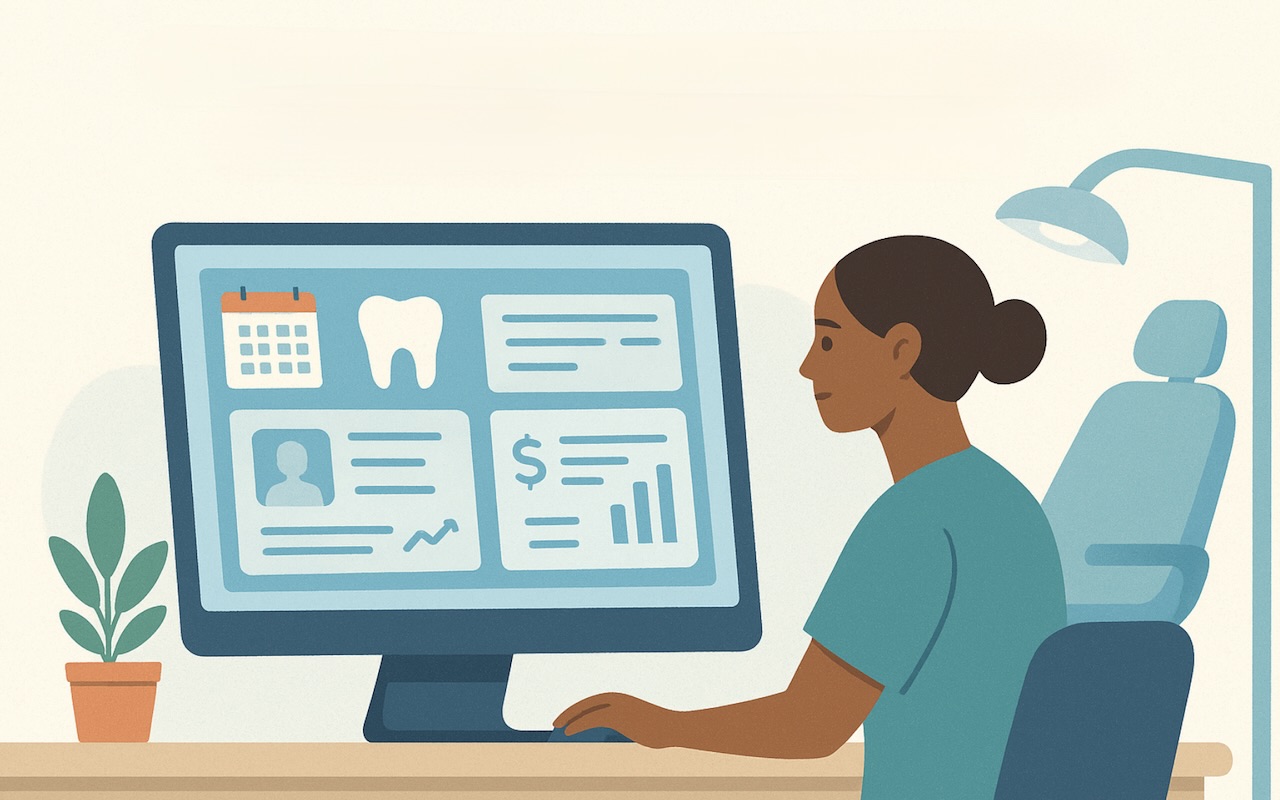
Dental software programs are becoming essential for clinics that want to improve scheduling, billing, and patient communication. Many dentists and practice managers often ask: “Which program actually makes a difference in daily operations?” or “What features should I focus on?” The answer lies in choosing tools that not only reduce administrative tasks but also strengthen patient relationships and support long-term clinic growth.
In this article, we’ll explore what to look for in these systems, why the market is expanding so quickly, and how they can transform your practice.
What to Consider Before Choosing Software
Before making an investment, it helps to clarify your priorities. Common concerns include:
- Which features reduce time-consuming tasks? Look for scheduling, reminders, and billing functions.
- How simple is the interface? A tool that frustrates staff or patients won’t add value.
- Does it handle compliance and security? Protecting patient data is as critical as treatment quality.
- Are updates included? Systems that provide automatic updates save both cost and effort.
- Will it integrate with other tools? Imaging systems and electronic health records should connect smoothly.
Answering these questions ensures the system supports both your team and your patients.
Growth of the Dental Software Market
The adoption of technology in dentistry is now an industry standard. In 2024, the global dental software market was valued at $3.22 billion. Forecasts suggest it could nearly triple to $7.97 billion by 2033, reflecting a 10.6% annual growth rate.
In the U.S. alone, dental practice management software was worth $924 million in 2024. Analysts expect it to grow at a 9.1% CAGR through 2030.
These numbers make it clear: clinics are moving quickly to adopt systems that streamline operations and keep them competitive.
How Software Supports Practice Growth
1. Optimizing Front Desk Functions
In many clinics, administrative tasks are the main source of congestion. Appointment reminders, insurance claim automation, and online booking may all be facilitated by a competent application. Staff may now concentrate on patients since fewer appointments are missed and human error is decreased.
2. Enhancing the Patient Experience
Convenience is a modern expectation for patients. Digital access to treatment plans, automatic reminders, and online reservations all help to foster trust and clear up misunderstandings. Improved communication results in increased loyalty and fewer cancellations.
3. Transparency in Finance
For clinics, managing revenue is a common problem. The areas with high income and inefficiency are highlighted via integrated reporting. Reports may show how much revenue is linked to unpaid claims, for instance. This transparency allows practices to make corrections.
4. Protecting Sensitive Data
Dental practices handle sensitive health information. Modern systems come with encryption, secure access, and audit trails that reduce risk while complying with data privacy laws.
5. Adapting to Expansion
New needs are frequently created by growth. You may add features to cloud-based applications without having to replace the entire system since they expand readily. Long-term sustainability is supported by this adaptability.
Where to Learn More About Available Options
Resources that compare platforms side by side can be extremely valuable for professionals deciding on their next step. A well-structured guide to dental software programs highlights the features that truly impact practice efficiency and revenue, helping you make an informed decision.
Broader Impacts of Digital Adoption
These systems have advantages that go beyond billing and scheduling. Adopting them frequently results in broader gains for both patients and teams at the clinic.
Stronger Team Collaboration
When information is centralized, hygienists, dentists, and administrative staff work from the same data. This reduces miscommunication and keeps treatment plans consistent.
Better Patient Education
Numerous tools enable dentists to communicate with patients directly, sharing images, treatment schedules, and progress updates. Treatment suggestions are better understood and more widely accepted thanks to these technologies.
Data-Driven Decision Making
With analytics dashboards, clinics can monitor no-show rates, patient wait times, and the percentage of returning patients. These insights highlight where improvements are needed and help shape growth strategies.
Sustainability and Efficiency
Digital records reduce the need for physical files and printing. For many practices, this not only lowers costs but also supports eco-friendly initiatives.
Conclusion
Dental software has evolved into a vital tool for clinics looking to provide high-quality care while managing their operations effectively. Patients, employees, and income all benefit from these systems' automated scheduling and compliance protections.
Global use is increasing, as seen by market expansion, demonstrating that digital tools are now essential. Selecting technologies that streamline procedures, encourage teamwork, and expand with the business should be the main priority for semi-professional dentists. Making the correct decision now positions your clinic for long-term success, where operational effectiveness, financial stability, and patient pleasure all go hand in hand.
Share this post
Leave a comment
All comments are moderated. Spammy and bot submitted comments are deleted. Please submit the comments that are helpful to others, and we'll approve your comments. A comment that includes outbound link will only be approved if the content is relevant to the topic, and has some value to our readers.

Comments (0)
No comment